DocBeav
Bronze Member
I came across this rock while detecting where I'm originally from in Bucks County. I had been on a friends land that I had detected a couple of times before and found a rock carving there which I had posted in the "treasure marks and signs" forum:
http://www.treasurenet.com/forums/treasure-marks-signs/351817-indian-carving-colonial-quarry-marks.html
Never heard much on that one but it was in close proximity to an area that was quarried but I never found out much about it. Basically a diamond shape with what looks like "fringe" around it. Could be some kind of quarry marks or something but I just don't know.
Now, this rock is a bit different. I was moving up a small creek tributary to access another section of land (un-used township land, just adjacent to my friend's property) anbd I saw this stone sticking up straight out of the ground and from a distance it looked like a marker or headstone. Of course I made a beeline for it as it just looked out of place (there are rocks all over but this one looked "placed" or something the way it was in the ground). It was right next to the creek bank which was eroding away so I scanned it real quick with the detector and visually (didn't wanna be messing with any old graves or burial sites!) but didn't notice anything. When I looked at the rock though, I could see some distinct shapes that didn't look natural. I took pictures of the rock as it was, then after I poured some water on it to make the pictures stand out. (Thank you Ben Gates from "National Treasure Book of Secrets"!) Took several close ups and a couple of the back side (which may have some pictures there but it was hard to see). (Some of the pictures in preview mode are pretty clear but others may not be so clicking on them may help.)
Front:
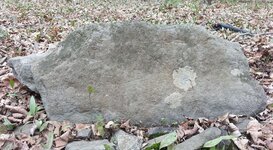
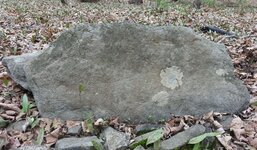
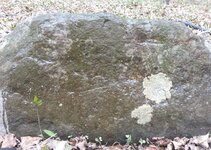
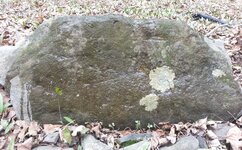
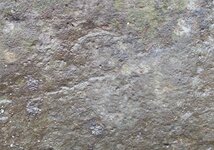
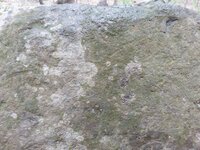
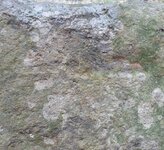
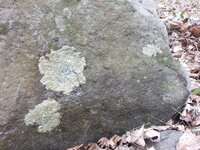

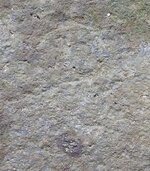
Back:
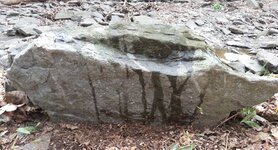
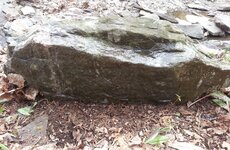
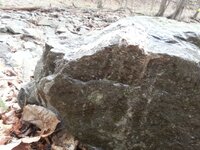
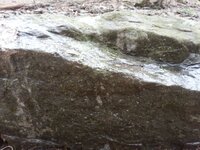
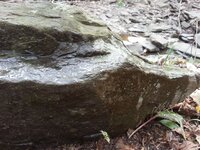
I highlighted or traced out the lines that stood out more than the others. One of the "figures" that was more easily seen than the others had a triangle shaped body showing arms and legs and a neck and bow shaped head. There are several representations of this same figure but the others were had to see and of varying sizes. Another one seemed to be a head and shoulders with the arms above the head.
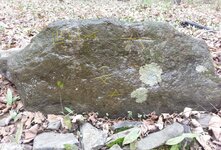
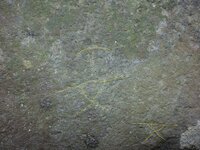
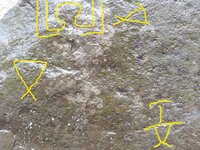
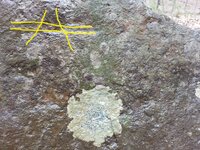
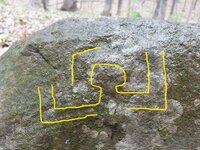
I also found what looked like a grinding stone near the creak and a piece of a broken one in the water. I say looks like it but I'm not really knowledgeable about any of this so I'm hoping you are.
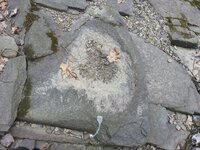
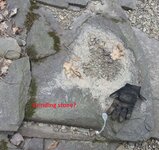
Take a look and tell me what ya think. I sent the photos to a professor in Pa but have had no response. The Leni Lenape Indians were the tribe that was present in the area (part of the Delaware tribes) when the first trappers and colonists arrived but I don't know if this is something they would have done or something much earlier. Didn't find much while detecting out there (other than Pa's answer to the aluminum pull tab, which is shotgun shells! They are EVERYWHERE! LOL The deer don't stand a chance!) but at least the dog had fun!
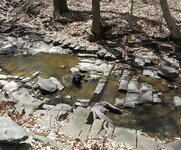
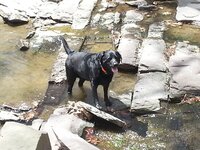
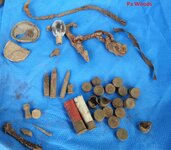
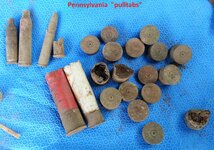
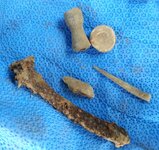
http://www.treasurenet.com/forums/treasure-marks-signs/351817-indian-carving-colonial-quarry-marks.html
Never heard much on that one but it was in close proximity to an area that was quarried but I never found out much about it. Basically a diamond shape with what looks like "fringe" around it. Could be some kind of quarry marks or something but I just don't know.
Now, this rock is a bit different. I was moving up a small creek tributary to access another section of land (un-used township land, just adjacent to my friend's property) anbd I saw this stone sticking up straight out of the ground and from a distance it looked like a marker or headstone. Of course I made a beeline for it as it just looked out of place (there are rocks all over but this one looked "placed" or something the way it was in the ground). It was right next to the creek bank which was eroding away so I scanned it real quick with the detector and visually (didn't wanna be messing with any old graves or burial sites!) but didn't notice anything. When I looked at the rock though, I could see some distinct shapes that didn't look natural. I took pictures of the rock as it was, then after I poured some water on it to make the pictures stand out. (Thank you Ben Gates from "National Treasure Book of Secrets"!) Took several close ups and a couple of the back side (which may have some pictures there but it was hard to see). (Some of the pictures in preview mode are pretty clear but others may not be so clicking on them may help.)
Front:










Back:





I highlighted or traced out the lines that stood out more than the others. One of the "figures" that was more easily seen than the others had a triangle shaped body showing arms and legs and a neck and bow shaped head. There are several representations of this same figure but the others were had to see and of varying sizes. Another one seemed to be a head and shoulders with the arms above the head.





I also found what looked like a grinding stone near the creak and a piece of a broken one in the water. I say looks like it but I'm not really knowledgeable about any of this so I'm hoping you are.


Take a look and tell me what ya think. I sent the photos to a professor in Pa but have had no response. The Leni Lenape Indians were the tribe that was present in the area (part of the Delaware tribes) when the first trappers and colonists arrived but I don't know if this is something they would have done or something much earlier. Didn't find much while detecting out there (other than Pa's answer to the aluminum pull tab, which is shotgun shells! They are EVERYWHERE! LOL The deer don't stand a chance!) but at least the dog had fun!





Upvote
0




